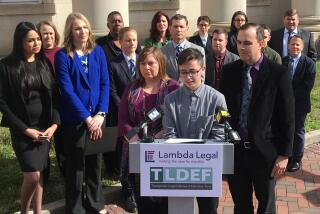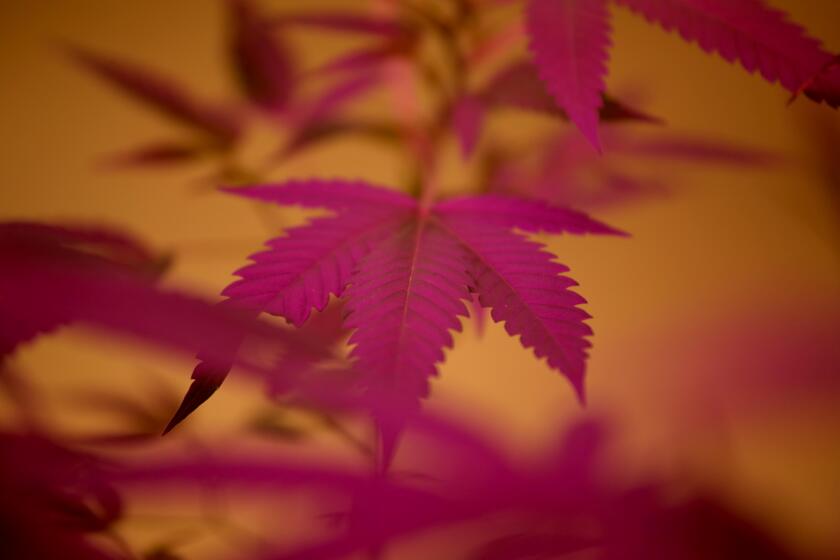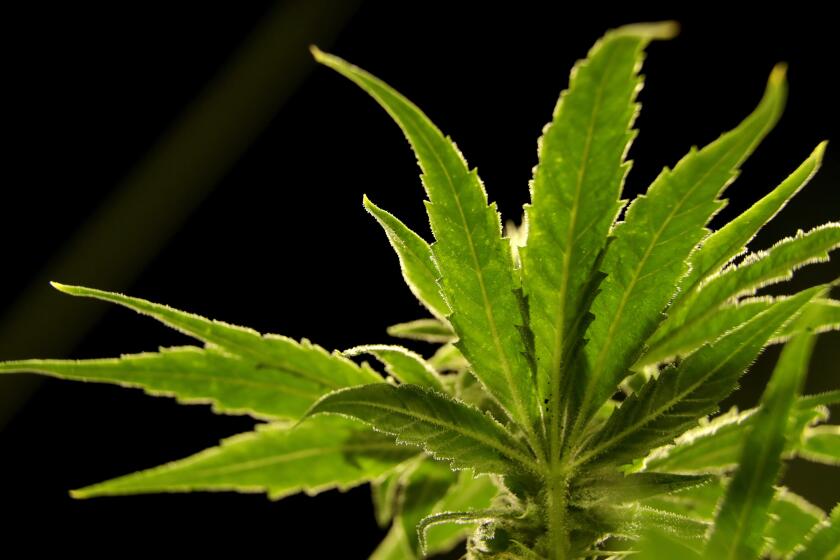Suspected Smuggling Tunnel Is Closed
An elaborate tunnel crossing the U.S.-Canada border 90 miles north of here was shut down, and three suspected drug-runners were arrested this week after a months-long investigation by authorities in both countries.
The tunnel, about 100 yards long and equipped with electricity and a ventilation system, began under a Quonset hut on the Canadian side and led to an abandoned home just across the border near Lynden. Police said the suspects planned to use the passageway to smuggle marijuana and other drugs into the United States.
More than 30 smuggling tunnels have been discovered over the years at the U.S.-Mexico border. This is the first such discovery on America’s northern border.
“Whether it is used to smuggle drugs, contraband or terrorists.... the presence of a tunnel on our northern border threatens the security of both countries,” said John McKay, U.S. attorney in Seattle.
The suspects arrested Wednesday were Francis D. Raj, 30; Timothy Woo, 34; and Johnathan Valenzuela, 27, all of Surrey, British Columbia. On Thursday, they were charged in Seattle District Court with conspiracy to import marijuana into the United States and conspiracy to distribute marijuana.
Two others were arrested July 16, accused of carrying marijuana that had been transported through the tunnel. A Twin Falls, Idaho, woman was caught with 93 pounds of pot, and a Renton, Wash., man with 110 pounds. Police have not released their names.
Residents in rural Lynden, population 10,000, had mixed reactions. Some were surprised, but others, such as Barbara Luke, appeared to shrug it off.
“You don’t get too shocked about anything that happens anymore,” said Luke, recalling a resident who, just before he died seven years ago, built a three-story underground bunker.
“In case there was war,” she said.
Canadian authorities were the first to suspect that a tunnel was being built, court documents showed. In February 2005, Canadian police spied a man repeatedly entering the Quonset hut with lumber and reinforcing metal bars, and then coming out with loads of dirt.
U.S. authorities found out about the tunnel from recorded conversations an undercover officer had with a man. In one conversation, the man said “the tunnel was almost finished” and would accommodate loads of “300 pounds at a time.”
Shortly after, Canadian and U.S. agencies began cooperating, and installed video cameras and listening devices on both ends of the tunnel. Early in July, the cameras caught three men carrying large garbage bags through the passageway. According to police, the bags were later found to contain marijuana.
McKay described the tunnel as sophisticated and ambitious. Authorities said they thought it took about a year to build, and that it was finished this month.
One of the suspects owned the property on the Canadian side, and another acquired access to the Lynden property. Police said it was possible the Canadian property was purchased specifically for the tunnel.
“There was a lot of premeditation and planning,” said Cpl. Tom Seaman of the Royal Canadian Mounted Police, one of three Canadian agencies involved in the investigation.
The Canadian entrance to the tunnel was reinforced with concrete and rebar, and looked like the threshold of a 1950s-style concrete bomb shelter.
The passageway ran along at a depth of 3 to 10 feet and passed under two roads.
The opening was about 5 feet high and 4 feet across. The sides of the passageway were lined with 2-by-6 wood supports, and the floor was part concrete, covered with plywood. Lights and fans were installed at various points. Water-removal pipes were also in place.
Seaman said there was not much chance that other tunnels on the northern border would go undetected.
Since Sept. 11, 2001, authorities on both sides of the border have begun using state-of-the-art technology designed by geophysicists to detect and pinpoint irregularities underground. Plus, Seaman said, there are more people and agencies watching the border.
On the U.S. side, the Drug Enforcement Agency worked with Immigration and Customs, the Bureau of Alcohol, Tobacco, Firearms and Explosives and the Washington State Patrol.
“The message here is: These kinds of things will be detected,” Seaman said. “People who are going to do this are going to get caught.”
More to Read
Start your day right
Sign up for Essential California for news, features and recommendations from the L.A. Times and beyond in your inbox six days a week.
You may occasionally receive promotional content from the Los Angeles Times.






